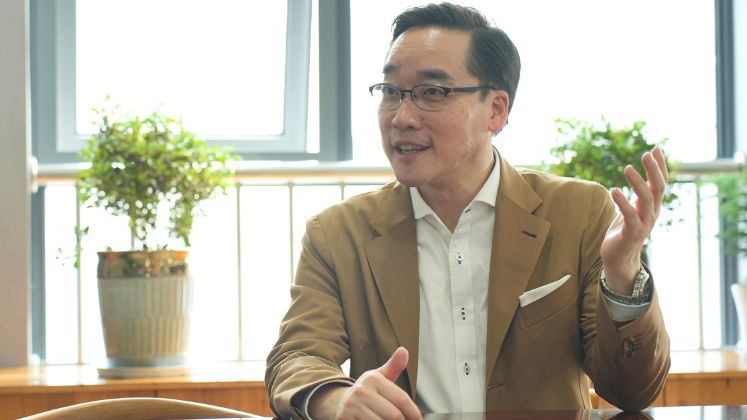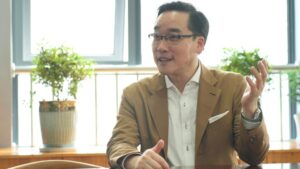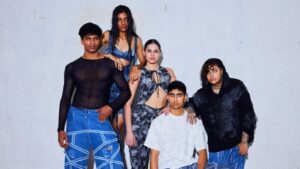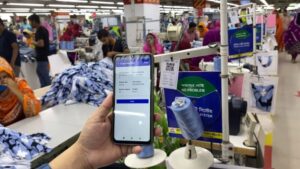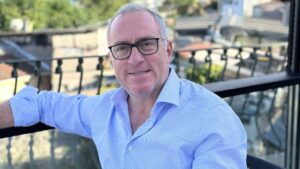Why this expansion? “Our customers are looking for faster production, better quality and more variety in products,” said Jonathan Oh, Senior Vice President and General Manager, Global Apparel Division, Freudenberg Performance Materials.
The company’s Indian manufacturing facility in Chennai already produces interlinings for garment factories across nonwoven, woven weft and shirt interlinings.
With polyester woven interlinings gaining popularity, especially in casual shirts and India being a major shirt producer, the company sees this as the perfect time to expand. Geopolitical factors are also pushing companies like Freudenberg to shift to or expand production in South Asia.
The expansion began a year-and-a-half ago at their Chennai plant and production is set to begin this Fall.
Jonathan Oh acknowledged that while the apparel market is slowly recovering, it remains unpredictable. Performancewear and outdoor apparel are growing, but formal menswear faces challenges. He stressed that staying agile and adaptable is key to navigating these shifts.
With this changing scenario, Jonathan discussed more about the company’s strategies to thrive while continuing to serve the market. Here are the edited excerpts:
AR: You entered India in 1998. How has the market evolved when it comes to pricing?
Jonathan Oh: Pricing is always important, but it’s not just about being the cheapest. Many players focus solely on cost, but we believe in staying competitive by delivering real value to customers.
For example, by producing polyester woven interlining locally, we offer Indian garment manufacturers quicker access to materials by eliminating import delays. This is a significant advantage—not just in terms of cost but also in convenience and efficiency.
Currently, polyester woven interlining is mostly imported from China. All our competitors source it from there and we do too. However, starting September- October, we will begin producing polyester woven interlining in India, leading to reduced lead times and increased flexibility for our clients.
This is the kind of value we aim to bring to our Indian customers, beyond just cost savings.
| Pricing is always important, but it’s not just about being the cheapest. Many players focus solely on cost, but we believe in staying competitive by delivering real value to customers. By producing polyester woven interlining locally, we offer Indian garment manufacturers quicker access to materials by eliminating import delays. |
AR: Sustainability is a major focus for the industry. How are you driving innovation in this space?
Jonathan Oh: Sustainability isn’t just a buzzword for us, it’s something we take seriously with a structured approach. That’s why we developed our House of Sustainability platform, built around seven key product pillars that drive our efforts in creating more sustainable products and growing our business with sustainability in mind.
First, we focus on giving plastic waste a second life with our Recycled general interlinings made by recycling post-consumer PET bottles and Recyclable interlinings made from 100 per cent polyamide 6. These recyclable interlinings can be recycled indefinitely supporting a true closed-loop economy. Our RCY series, featuring recycled polyester interlinings, has been a big hit, especially in sportswear. Similarly, our 100 per cent recycled Thermoplastic Polyurethane (rTPU) interlinings have received an excellent response. In fact, we are the exclusive provider of rTPU super-elastic nonwoven interlinings.
Another important pillar is our Energy-saving interlinings, which helps factories reduce energy needed for fusing by up to 50 per cent.
We are also making great strides in Biodegradable interlinings. For example, we developed a biodegradable fusible cotton shirt interlining that naturally breaks down over time.
Then there’s Sustainable cotton interlinings. We use certified sustainable cotton, meeting standards like Cradle to Cradle, GOTS, Organic 100 and others.
And we’re also exploring more Nature-based solutions like organic cotton, kapok and bamboo to create sustainable interlinings. In Recycled thermal insulations, we have also introduced Lyocell based paddings, which offers excellent thermal efficiency while being eco-friendly.
Beyond these seven pillars, we also focus on transparency and traceability, which are becoming more important than ever. Brands want full visibility into their supply chain—from raw materials to finished garments. That’s why we collaborate with leading platforms and standards like Higg Index, TrusTrace, IPE (The Institute of Public and Environmental Affairs), Inspectorio, GRS and BCI to ensure our materials meet the highest sustainability benchmarks.
| House of Sustainability Platform
This platform, built around seven key product pillars, drives Freudenberg’s efforts in creating more sustainable products and growing their business with sustainability in mind. These pillars are:
|
AR: With the pressure to constantly launch new products, how do you view innovation?
Jonathan Oh: Innovation is our DNA. For us, it’s about functionality, sustainability and delivering cost-effective value.
Freudenberg Group allocates over five per cent of our turnover to R&D, reinvesting heavily into innovation. But beyond just spending, Freudenberg tracks how much of our revenue comes from new products launched within the last four years— and that figure stands at over 30 per cent of our Group’s total turnover.
This means that without innovation, we would be losing around a third of our sales.
Our commitment to innovation is reflected not just in our products but also in how we’ve evolved as a company. The Freudenberg Group now has 10 business groups and our business group, once Freudenberg Nonwovens, is now called Freudenberg Performance Materials. This shift recognises that apparel goes beyond nonwovens to include woven and textile-based solutions. Performance drives us and continuous innovation keeps us ahead.

